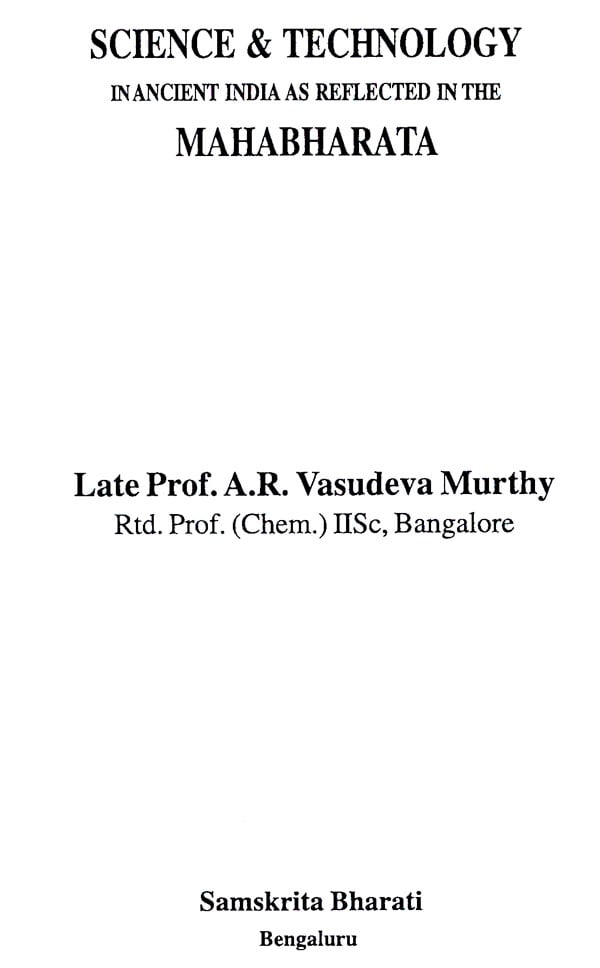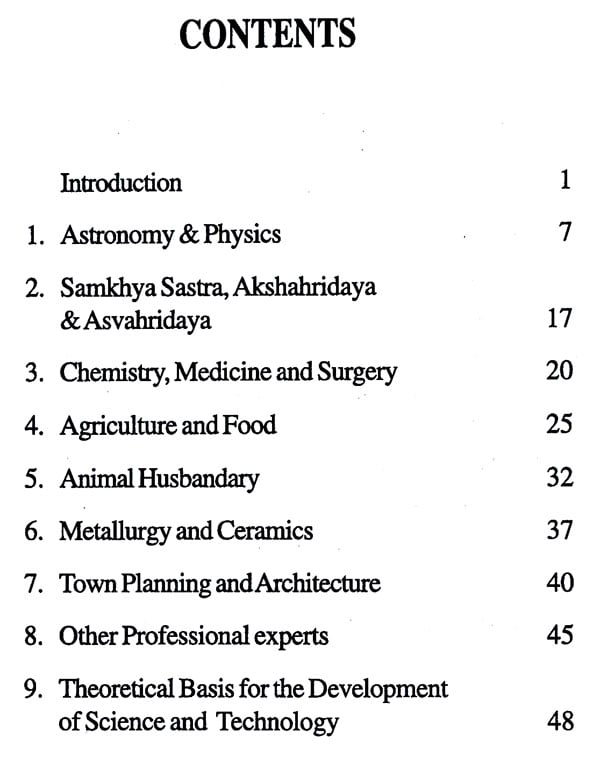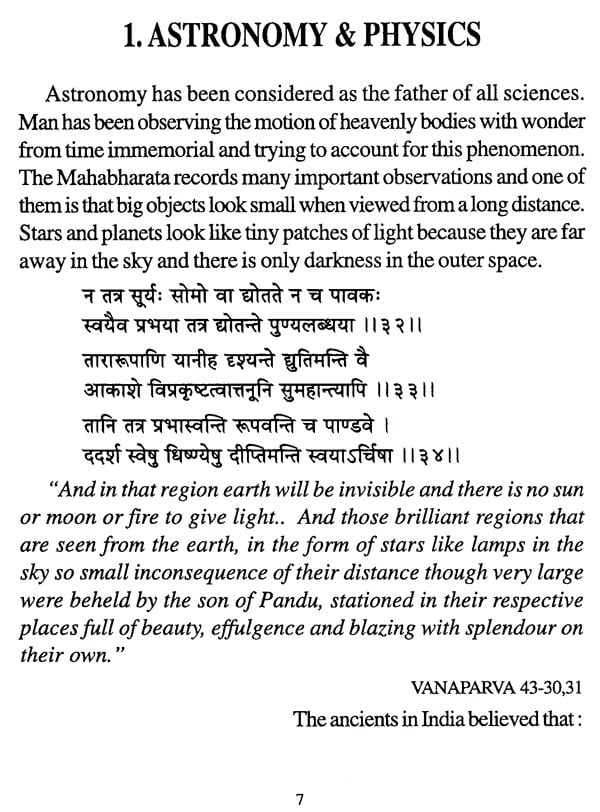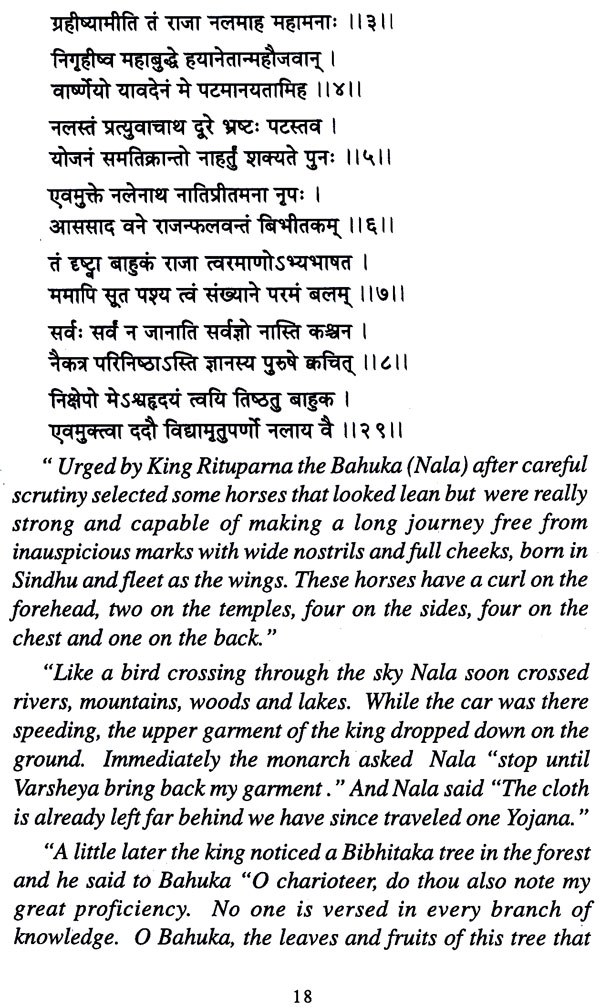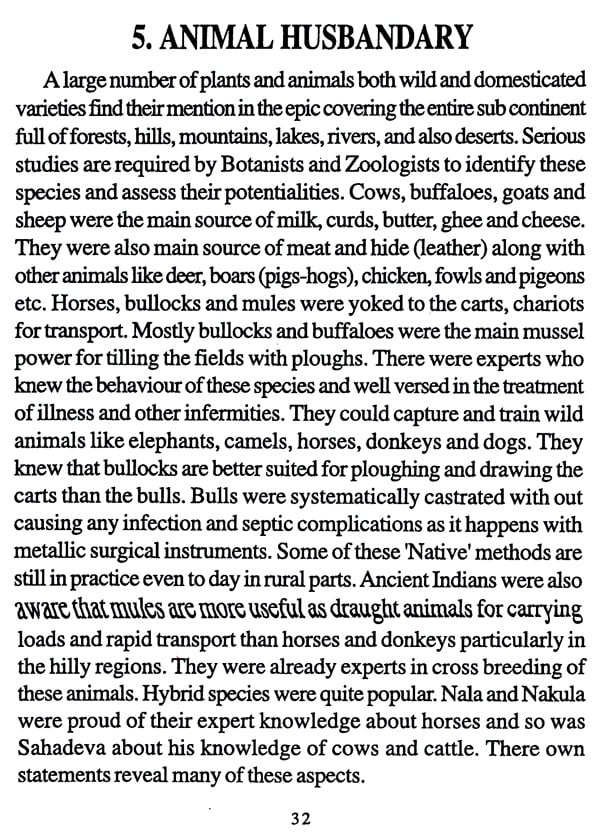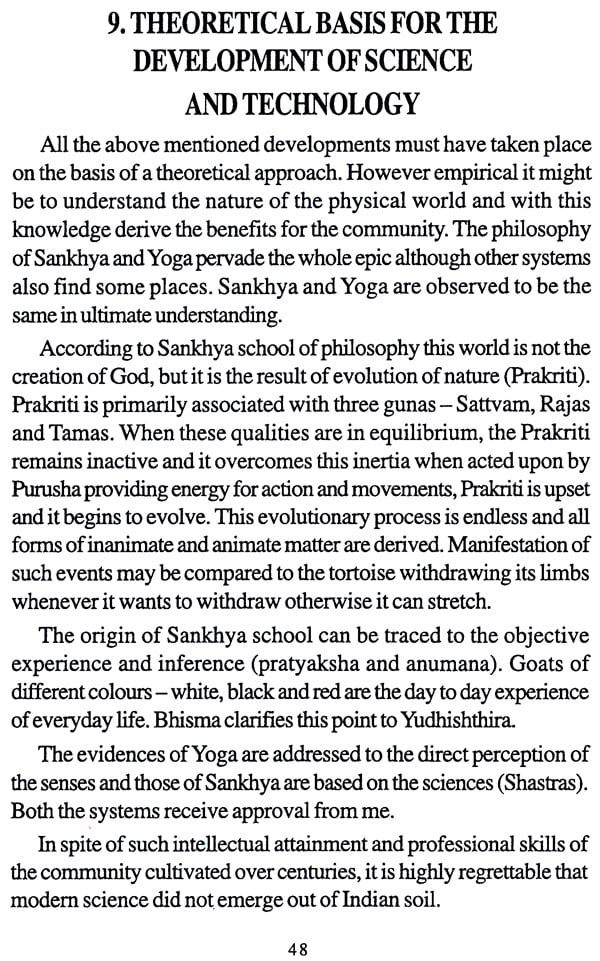
Science and Technology in Ancient India as Reflected in the Mahabharata
Book Specification
| Item Code: | NAV738 |
| Author: | A.R Vasudeva Murthy |
| Publisher: | Samskrita Bharati, Delhi |
| Language: | Sanskrit Text with English Translation |
| Edition: | 2019 |
| ISBN: | 9789385969355 |
| Pages: | 48 |
| Cover: | PAPERBACK |
| Other Details | 8.50 X 5.50 inch |
| Weight | 70 gm |
Book Description
There are several direct and indirect references of the scientific thought and scientific process, and the development of various technologies by ancient Hindus. This is reflected in several texts including the texts such as Rigveda, Ramayana, various puranas, etc. There are also several subject specific texts related to plants and agriculture, mathematics, chemistry, materials, medicine, astronomy, etc.
The book "SCIENCE AND TECHNOLOGY IN ANCIENT INDIA AS REFLECTED IN THE MAHABHARATA" written by Prof. A. R. Vasudeva Murthy attempts to provide a glimpse of science and technology aspects embedded in Mahabharata in a language common man can understand. I had the privilege of working with Prof A R Vasudeva Murthy, when he was a professor at Indian Institute of Science. I continued to study some of the Upanishads and our scriptures along with some of my friends. I cherish the memories of intense discussions founded on scientific spirit and deep intellectual inquiry.
This booklet gives examples of science and technology principles in Mahabharata under several headings such as ASTRONUMY & PHYSICS, SCIENCE OF NUMBERS, SCIENCE OF DICE AND EQUESTRAIN SCIENCE, CHEMISTRY, MEDICINE & SURGERY, AGRICULTURE AND FOOD ANIMAL HUSBANDARY, METALLURGY AND CERAMICS, TOWN PLANNING AND ARCHITECTURE, TEXTILES, SHIPBUILDING AND NAVIGATION, THEORETICAL BASIS FOR THE DEVELOPMENT OF SCIENCE AND TECHNOLOGY.
This book gives the idea, that by reading Mahabharata it is possible to glean through the text and infer indirectly from the narrative and descriptive accounts of the events both during the time of peace and war. This conjecture based on the literary evidence could be complemented from the other disciplines such as archaeology which provides unimpeachable material evidences for their existence. Some of the traditions and customs of the ancient times continue to be prevalent even today which are very precious and valuable to reconstruct the past.
Efforts have been directed to get a glimpse of such technologies developed to meet the day needs for living and the theoretical basis for the development and expansion of technologies. A brief account of this attempt will be presented in this book - a bird's view of the different branches of Science, Technology and Engineering. The narrative style of this book is very simple and a lay reader also gets an idea. A simple translation to slokas are very useful in this regard.
The Mahabharata has been well known as an Encyclopedia of Mythology, Theology, Philosophy, Law and Ethics, Civilization and History of India. No doubt the epic conserves in a collected form of all the beliefs and traditions cultivated by the people of the times inhabiting this country. The claim that -"Whatever is here is also elsewhere; whatever is not, extant no where" - ADIPARVA 56 - 33is justified by extensive contents covering all aspects of human life.
The whole epic centers round a great fratricidal war along with a number of minor fightings, violent episodes and gambling between the two branches of a royal family viz. Kauravas & Pandavas. The bloody battle rages for eighteen days which is the subject matter of the five Books (PARVAS). Millions of men and animals were slaughtered in this short period of 18 days. According to the poet statistician's report an army of eighteen Akshauhini was wiped out. There was wide spread destruction and devastation. One Akshauhini consists of 21,870 chariots, 21,870 elephants, 65,610 horses and 1,09,350 foot soldiers. The details are given in the beginning of the first book (ADI PARVA) itself.
"O ye best of Brahmins, Mathematicians have calculated that the number of chariots in an Akshauhini is twenty one thousand eight hundred and seventy. The measure of elephants must be fixed at the same number 0 ye pure you must know that the number of foot soldiers is one hundred and nine thousand, three hundred and fifty. The number of horses is sixty five thousand six hundred and ten. These Oh Brahmins' as fully explained by me are the numbers of the Akshauhini as said by those acquainted with the principles of numbers. Oh best of Brahmins, according to this calculation, were composed of the eighteen Akshauhini of the Kaurava (11) and Pandava (7) army". "One chariot, one elephant, five foot soldiers form one Patti; three Pattis make one Sena-mukha; three Sena-mukhas are called Gulma; Three Gulmas a Gana; three Ganas a Vahini; three Vahinis together are called Pritana; three Pritanas form a Chamu; three Chamus one Anikini and Anikini taken ten times forms is called by the learned one Akshauhini".
**Contents and Sample Pages**
